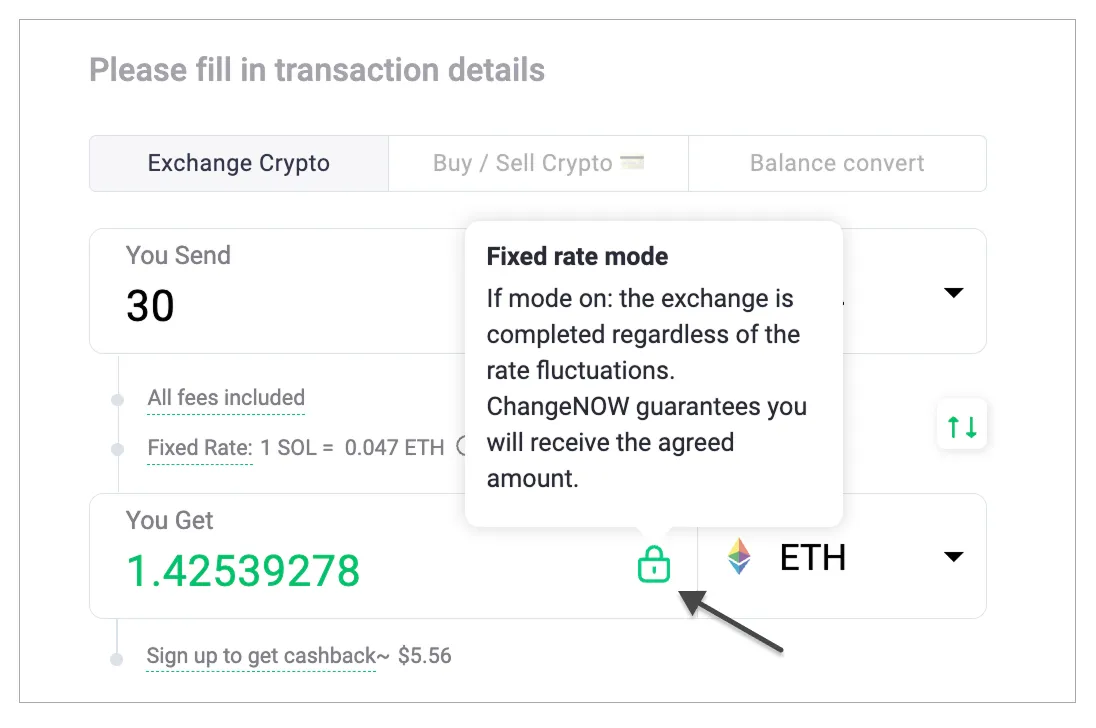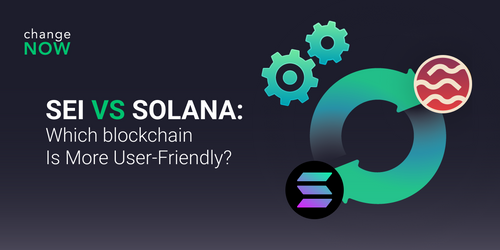What Is Slippage in Crypto and How to Avoid It (2025 Guide)

Disclaimer: This article is for informational and educational purposes only and does not constitute financial, investment, or trading advice. Cryptocurrency markets are highly volatile, and any actions involving digital assets carry risk. Always do your own research (DYOR) and make decisions based on your own judgment, financial situation, and risk tolerance
Key Takeaways
- Slippage in crypto is the difference between the price you expect when placing a trade and the price you actually get after execution.
- It happens because of market volatility, low liquidity or delays in order execution.
- Positive slippage means a better price than expected; negative slippage means a worse one.
- On centralized exchanges, slippage is caused by gaps in the order book; on decentralized exchanges, it comes from AMM mechanics and shallow liquidity pools.
- You can reduce slippage by using limit orders, trading during high-liquidity hours (13:00–17:00 UTC), setting sensible slippage tolerance, or using fixed-rate swaps like ChangeNOW.
- Typical slippage tolerance levels: 0.1–0.5% for BTC/ETH, 0.5–1.5% for mid-cap coins, and 2–5%+ for low-liquidity tokens.
- Slippage cannot be fully avoided, but it can be controlled with proper tools, timing, and order types.
How Does Slippage Work in Crypto Trading?
Slippage refers to the gap between your expected order price and the actual execution price. This difference can work in your favor (positive slippage) or against you (negative slippage).
When you place a market order, your exchange matches it with available orders in the order book. But in fast-moving markets, prices shift every second. If the market moves before your order executes, you’ll end up trading at a slightly different price.
Example: You want to buy 1 ETH for $2,000. By the time your order executes, you pay $2,010 — that’s 0.5% negative slippage. If you buy at $1,990 instead, that’s 0.5% positive slippage.
Market Orders vs Limit Orders
There are two main types of orders in trading — market and limit — and choosing between them directly affects how your trade is executed.
| Feature | Market Order | Limit Order |
|---|---|---|
| Execution speed | Instant at best available price | Only when target price is reached |
| Price control | None — price may move | Full control over entry/exit price |
| Risk of slippage | High in volatile markets | Low — executes only at preset price |
| Best for | Quick trades | Precise entries/exits |
Bottom line: Limit orders are safer for traders who prioritize price accuracy over execution speed, especially during volatile or low-liquidity conditions.
How Exchanges Affect Slippage (CEX vs DEX)
Slippage in crypto also depends on how trades are executed on different types of exchanges. This is still part of understanding what slippage is, before we move on to why it happens and how to avoid it.
| Feature | Centralized Exchanges (CEXs) | Decentralized Exchanges (DEXs) |
|---|---|---|
| Execution model | Order book matches buy and sell orders | Automated market makers (AMMs) and liquidity pools |
| How slippage occurs | Price moves before the order book updates or there aren’t enough matching orders at your price | Trade changes the token ratio in the pool, causing price impact along the AMM curve |
| Liquidity role | Thin order book = higher slippage | Shallow liquidity pool = higher slippage |
| Execution speed | Fast, but affected by latency and rapid price changes | Depends on blockchain confirmation speed — delays increase slippage |
Bottom line: Both CEXs and DEXs experience slippage, but for different reasons. On CEXs it comes from order book gaps, while on DEXs it’s caused by AMM pricing and liquidity pool depth. In the end, less liquidity and slower execution always mean higher slippage.

Why Does Slippage Happen on Crypto Markets?
Slippage is caused by a mix of market and technical factors.
Market Volatility — Prices Change Faster Than Orders Execute
Crypto markets are highly volatile. Prices can shift within milliseconds due to news, token listings, liquidations, or whale activity. If the price moves before your order is filled, you get slippage.
Low Liquidity — Not Enough Orders or Pool Depth
Liquidity shows how easily an asset can be bought or sold without impacting its price.
On CEXs, thin order books force large trades to consume multiple price levels.
On DEXs, shallow liquidity pools cause the AMM price to shift sharply along the curve. According to CoinGecko’s 2025 Liquidity Report [1], BTC/USDT and ETH/USDT remain the least affected pairs thanks to their deep order books.
Network or Execution Delays — Market Moves While You Wait
Particularly relevant on DEXs, where each trade is a blockchain transaction. During network congestion (high gas fees, slow block times), orders take longer to confirm — giving the market more time to move.
Slippage is often confused with another concept — price impact. They are related, but not the same. Before we move on, it’s important to understand the difference between them.
Price Impact vs Slippage — Key Differences
| Term | What It Means | Example |
|---|---|---|
| Price Impact | Expected price change caused by your trade size | Large market buy moves price up 0.3% |
| Slippage | The actual difference between expected and executed price | You expected 0.3% price impact but ended with 0.5% due to delay |
Key point: Large orders increase both price impact and slippage — especially in low-liquidity markets.
Types of Slippage in Crypto
| Type of Slippage | Description | Example |
|---|---|---|
| Positive Slippage | Execution price is better than expected | Buy 1 ETH at $2,000, fills at $1,990 — gain $10 |
| Negative Slippage | Execution price is worse than expected | Buy 1 ETH at $2,000, fills at $2,010 — lose $10 |
Bottom line: Positive slippage can work to your advantage, but negative slippage is far more common — especially in volatile or low-liquidity markets. Understanding both types helps traders manage risk and choose the right order strategy.
How to Avoid Slippage When Trading Crypto
You can’t remove slippage entirely, but you can greatly reduce it with the right approach.
Swap via Fixed-Rate Exchanges
Fixed-rate swaps let you make a trade without worrying about price changes. In ChangeNOW’s Fixed Rate mode, the rate is locked at the moment of confirmation, so even if the market moves during processing, you still receive exactly the amount that was quoted. For a deeper comparison of fixed-rate vs classic-flow exchange options, read our article Fixed Rate vs Classic Flow: Understanding the Differences.

Quick Guide: How to Use Fixed Rate on ChangeNOW
- Go to ChangeNOW.io
- On the swap screen, choose ‘Fixed Rate’
- Enter the amount and click Exchange Enter the amount and click Exchange
- Confirm the locked rate before completing the trade
- Receive crypto instantly at the locked rate
Use Limit Orders
Limit orders protect you from unfavorable price movement by setting a maximum or minimum rate. They’re slower but give you full control over execution price.
Trade During High Liquidity
Liquidity peaks when global markets overlap (roughly 13:00–17:00 UTC). At these times, order books are deeper, spreads tighter, and slippage lower. Avoid weekends or off-hours when trading volume drops.
Avoid Volatile Conditions
High volatility equals high slippage. Avoid trading during breaking news, listings, or major events when prices move fast.
Split Large Orders
For large trades, don’t move all liquidity at once. Break your order into smaller parts or use execution algorithms to minimize price impact.
Set Slippage Tolerance on DEXs
When trading on decentralized exchanges, always set your slippage tolerance. Common settings:
- 0.1%–0.5% for major pairs (BTC, ETH, stablecoins)
- 1%–2% for mid-caps
- 3%+ for illiquid tokens
Use Stablecoins for Predictable Pricing — USDT, USDC, DAI experience minimal volatility.
Stablecoins like USDT, USDC, or DAI are pegged to fiat and experience minimal volatility. Swapping into stablecoins before major moves can prevent unwanted slippage.
What Is a Good Slippage Tolerance in Crypto?
There’s no universal “perfect” slippage tolerance — it depends on liquidity and the asset you trade. The goal is to keep it low enough to avoid bad execution, but high enough so your transaction doesn’t fail.
Typical slippage tolerance ranges:
| Market Liquidity | Example Pairs | Common Slippage |
|---|---|---|
| High | BTC/USDT, ETH/USDT | 0.1% – 0.5% |
| Medium | LINK/USDT, MATIC/USDT | 0.5% – 1.5% |
| Low | Small-cap, new tokens | 2% – 5%+ |
Key principle: Lower is safer but may cause failed transactions. Higher guarantees execution but increases risk — especially on DEXs where front-running and MEV bots are active.
Risks of Slippage — What Can Go Wrong
Transaction Fails (Too Low Tolerance)
If your slippage tolerance is set too low on a DEX, the trade simply won’t execute. This often happens during volatility or network congestion.
Transaction Executes at a Bad Price (Too High Tolerance)
Setting 5–10% tolerance just to “make sure it goes through” can backfire — your trade may be executed far from the expected price. TokenMetrics also highlights that negative slippage combined with high gas fees is one of the main reasons why traders lose profitability on DEX [2]s. Even if the price only moves by 0.3–0.5%, additional blockchain fees can completely wipe out potential gains, especially during high network activity.
MEV and Sandwich Attacks on DEXs
Bots monitor the mempool and insert transactions before and after yours — pushing the price against you, then profiting from the difference. The result: higher slippage and worse execution.
Partial Fills on CEXs
Your order might fill across multiple price levels if liquidity is thin. The final average price can be significantly worse than expected.
Price Impact Misunderstood as Slippage
Traders often blame slippage, when in reality the loss came from their own order size moving the market (price impact).
Conclusion: Crypto markets are fast-moving, and liquidity isn’t always stable. Slippage is a normal part of trading in such conditions, but being aware of how it can behave — and where it can go wrong — helps set realistic expectations.
Final Thoughts — Trade Smart, Avoid Slippage
Slippage is part of every trader’s reality, but it doesn’t have to cut into your profits. Understanding its causes and using practical tools helps you trade smarter and safer.
Summary:
- Slippage = difference between quoted and executed price.
- Caused by volatility, low liquidity, and network delays.
- Minimize it with limit orders, high-liquidity pairs, and stablecoins.
- Eliminate it entirely with fixed-rate swaps.
FAQ
1. What Is Slippage in Crypto?
The difference between your expected and actual execution price when the market moves before your order is filled.
2. What Is Slippage Tolerance in Crypto?
The maximum price deviation you allow before your transaction fails — typically between 0.1% and 1%.
3. Why Is Slippage Higher on DEXs?
Slippage is usually higher on decentralized exchanges because liquidity pools are smaller and execution depends on blockchain confirmation speed. During high-volatility periods or network congestion, transactions can take longer, allowing prices to move before completion. According to Kaiko’s 2024 research on crypto market liquidity [3], DEX traders experience stronger price deviation when liquidity fragments across pools and trading pairs compared to centralized exchanges.
4. How to Avoid Slippage in Crypto Trading?
Use limit orders, trade during high liquidity, and consider fixed-rate swaps to lock in predictable outcomes.
5. Is 0.5% slippage good?
Yes — for high-liquidity pairs like BTC/USDT or ETH/USDT, a 0.5% slippage tolerance is considered optimal. It allows trades to execute smoothly without exposing you to major price deviation.




